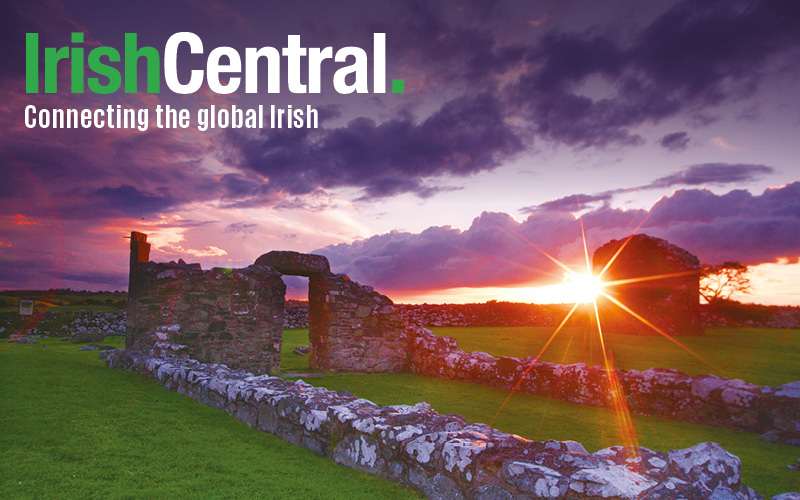Findmypast is working in partnership with IrishCentral to share fascinating insights into your Irish ancestors. Click here to get a special half price subscription, and discover your Irish roots today!
The appreciation for Gaelic culture is widespread today, celebrated in both America and Ireland. Without the Gaelic Revival of the 19th century, however, we might not know anything about Irish culture or language.
The Gaelic Revival reignited interest in the Ireland’s vibrant culture and laid the groundwork for Irish independence, which was declared in 1919.
By the mid-1800s, Irish culture had been on the decline for nearly three centuries, due in part to the dominant English rule over the island. This all began to change in 1853 when several Irish scholars founded the Ossianic Society in Dublin, which was dedicated to the study of Gaelic literature.
At the time, Gaelic was mostly spoken in rural communities of West Ireland (farthest away from English influence), but the scholars of the Ossianic Society began its revitalization, leading to the creation of the Society for the Preservation of Gaelic, founded in 1877.
Gaelic sports and culture
The Gaelic language was not the only focus of the Gaelic Revival. In 1884, the Gaelic Athletic Association (GAA) was founded, and became wildly popular. Quintessential Irish sports, hurling, and Gaelic football, were played with renewed enthusiasm throughout Ireland thanks to the GAA.
As the cultural movement caught on, Irish scholar Douglas Hyde (who would later become the first president of Ireland in 1938), made a rousing speech to the Irish Literary Society in Dublin. In it, he bemoaned the fact that over the past several centuries, the people of Ireland had lost their heritage by ignoring their culture and language.
On the Anglicization of Ireland, he urged, “We must teach ourselves not to be ashamed of ourselves, because the Gaelic people can never produce its best before the world as long as it remains tied to the apron-strings of another race and another island, waiting for it to move before it will venture to take any step itself.”
The Irish Nationalist movement
One year after his speech, in 1893, the Gaelic League was founded, with Hyde serving as its first president. The Gaelic League became the leading proponent of the Gaelic Revival, creating newspapers and other literature written in Gaelic. Although Irish nationalism was also brewing at this time, the Gaelic League and Gaelic Athletic Association attempted to remain apolitical and focus solely on a cultural revival.
Despite this fact, many members of these organizations became key members of the Irish nationalist movement, and many signatories of the 1916 proclamation and the Easter Uprising were members of the Gaelic League and Gaelic Athletic Association. This armed insurrection, though it failed, was a notable step on the path to the Irish War of Independence, which began in 1919.
The Gaelic Revival in America
1.5 million Irish came to America between 1880 and 1910, bringing enthusiasm for Gaelic culture with them. Of the immigrants that came during this period, a quarter of them came from counties in Ireland with a high proportion of Gaelic speakers (40% or more).
There is much evidence of the Gaelic language in the United States at this time. Irish communities spoke it, and there were newspapers and literary journals published in Gaelic. Even The Freeman’s Journal, one of Ireland’s oldest newspapers, commented in 1883 that American Irish seemed to be more interested in the Irish language than those left in Ireland.
In many ways this seemed true, the bilingual monthly journal, An Gaodhal, sold 2,880 copies monthly in 1882 while the Gaelic Journal in Dublin had only 400 subscribers. An Gaodhal printed Gaelic lessons to help Irish-Americans learn the language, and many wrote letters to the journal indicating these were essential to their learning.
Gaelic Revival
Passion for the Gaelic Revival in Ireland declined as events became increasingly political and violent after 1910, and then sharply fell off once Ireland achieved independence. Interestingly, the movement continued in the United States until the 1930s, but died down over time. The reasons for the decline in both Ireland and the U.S. are uncertain and still debated by historians today.
Though the movement lost much of its force, it left America and Ireland with a lasting passion for Gaelic culture. Even today, Gaelic literature is widely appreciated by those with and without Irish heritage. Gaelic sports are thriving on both sides of the Atlantic, and Irish people everywhere have an appreciation for their vibrant history and culture.
Do you have Irish relatives from this period in history?
Discover what your ancestors were up to in 1885 at the time of the Gaelic Revival. Search Findmypast’s Irish Electoral Registers from 1885-1886 to see where they were during this historic time. You can also search by location to see who was living in your family home, or in their town and neighborhood.
Keep your Irish heritage alive by investigating your own history today!
For more stories on tracing your Irish heritage from Findmypast click here.
* Originally published in 2015.




Comments